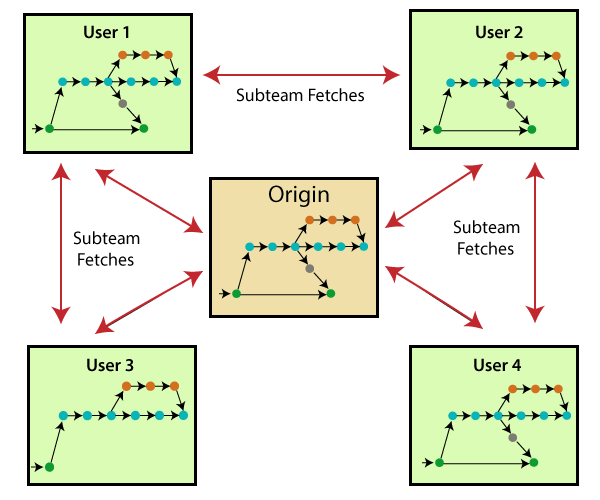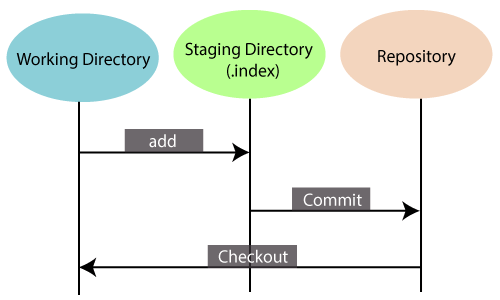GIT & GIT HUB
Git is a free & open source distributed version control system designed to handle everything from small to very large projects with speed and efficiency.
Git is easy to learn and has a tiny footprint with lightning fast performing It outclasses SCM tools like Subversion, CVS, Perforce, and Clear Case with features like cheap local branding, convenient staging areas, and multiple workflows.
What is Git?
- Git is an open-source distributed version control system. It is designed to handle minor to major projects with high speed and efficiency.
- It is developed to co-ordinate the work among the developers. The version control allows us to track and work together with our team members at the same workspace.
- Git is foundation of many services like GitHub and GitLab, but we can use Git without using any other Git services. Git can be used privately and publicly.
- Git was created by Linus Torvalds in 2005 to develop Linux Kernel.
- It is also used as an important distributed version-control tool for the DevOps.
Features of Git

- Open Source :-Git is an open-source tool. It is released under the GPL (General Public License) license.
- scalable:-Git is scalable, which means when the number of users increases, the Git can easily handle such situations.
- Distributed:-One of Git's great features is that it is distributed. Distributed means that instead of switching the project to another machine, we can create a "clone" of the entire repository. Also, instead of just having one central repository that you send changes to, every user has their own repository that contains the entire commit history of the project. We do not need to connect to the remote repository; the change is just stored on our local repository. If necessary, we can push these changes to a remote
ref:-git tutorial-#
- Security:-Git is secure. It uses the SHA1 (Secure Hash Function) to name and identify objects within its repository. Files and commits are checked and retrieved by its checksum at the time of checkout. It stores its history in such a way that the ID of particular commits depends upon the complete development history leading up to that commit. Once it is published, one cannot make changes to its old version.
- Speed:-Git is very fast, so it can complete all the tasks in a while. Most of the git operations are done on the local repository, so it provides a huge speed. Also, a centralized version control system continually communicates with a server somewhere.
- Data Assurance:-The Git data model ensures the cryptographic integrity of every unit of our project. It provides a unique commit ID to every commit through a SHA algorithm. We can retrieve and update the commit by commit ID. Most of the centralized version control systems do not provide such integrity by default.
- Staging Area
- The Staging area is also a unique functionality of Git. It can be considered as a preview of our next commit, moreover, an intermediate area where commits can be formatted and reviewed before completion. When you make a commit, Git takes changes that are in the staging area and make them as a new commit. We are allowed to add and remove changes from the staging area. The staging area can be considered as a place where Git stores the changes.
- Although, Git doesn't have a dedicated staging directory where it can store some objects representing file changes (blobs). Instead of this, it uses a file called index.

- Another feature of Git that makes it apart from other SCM tools is that it is possible to quickly stage some of our files and commit them without committing other modified files in our working directory.
- Maintain the clean history
- Git facilitates with Git Rebase; It is one of the most helpful features of Git. It fetches the latest commits from the master branch and puts our code on top of that. Thus, it maintains a clean history of the project.
Exploring The GitHub Interface
To give you a basic understanding of what the GitHub interface looks like, here’s the WordPress source code hosted at a Git Hub reposity:

And once you made some changes, you could submit that code back to a branch by making a pull request. A pull request is basically asking the person in charge of the branch to include your code. And it also helps that person see exactly what you’ve changed in the code.
If you wanted to edit some or all of the WordPress source code on your own account on a more permanent basis, you could also fork it by clicking the Fork button (a fork is similar in concept to a branch, but a fork is more permanent):
Comments
Post a Comment